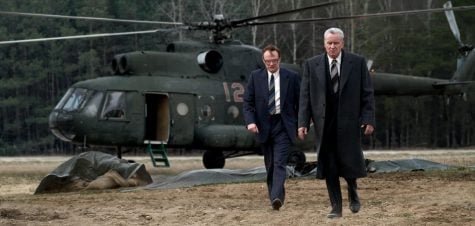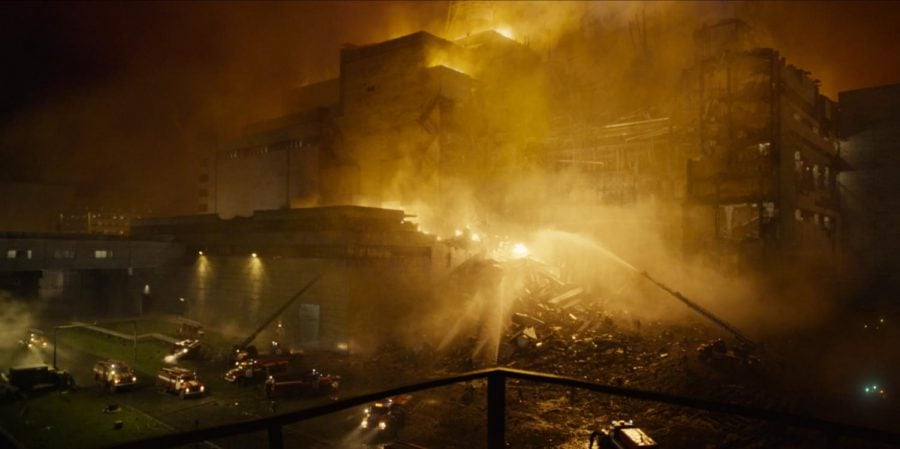HBO’s ‘Chernobyl’ provides harrowing look at history’s worst nuclear disaster
The aftermath of the explosion in Chernobyl, which eventually became the deadliest nuclear disaster in history.
When the new season of “Game of Thrones” premiered two Sundays ago, viewers got a glimpse into what looked like a post-apocalyptic world.
It was in fact a trailer for HBO’s new mini-series, “Chernobyl,” which chronicles the deadliest nuclear disaster in the history of the world, its attempted cover-up and the horrifying and unending process of decontaminating the area.
The mini-series, which premieres May 6, begins seconds after the explosion at Reactor 4. The scientists manning the reactor that night scramble to shut the reactor down. No one is sure what happened. A young scientist peers over a railing where the reactor used to be.
“You’re confused,” the commander, Anatoly Dyatlov, tells him when he reports what he saw. “RBMK reactor cores don’t explode. What you’re saying is physically impossible.”
It takes three whole days before anybody acknowledges that the core is gone, all the while spewing higher levels of radiation into the atmosphere than were even conceivable in the naive days of the Manhattan Project.

Jared Harris and Stellan Skarsgard as Valery Legasov, the Soviet scientist chosen to investigate the explosion and Boris Shcherbina, the man who led the Soviet commission.
The worker who peered over the railing didn’t know that by even gazing into the reactor, he had stared into the eyes of Medusa. Rather than turning to stone, his skin began to peel off and he vomited blood until he died minutes later. Such was the fate of untold numbers of scientists, firefighters and hospital workers — untold because the Soviet government’s death total remains at an unbelievable 31.
Families watch the power plant burn in the mid-night from a bridge a few kilometers from the plant. Radioactive ash falls from the sky like deathly snowflakes as the children twirl and gleefully dance in it. Today it is known as “The Bridge of Death.” No one who watched from there survived.
It isn’t until the final minutes of the show that we learn what exactly caused the reactor to blow, and in a way, the story of how the reactor failed is the same one that is told time and time again in the five-episode series.
It all starts with a powerful Communist in a nice office. He leans on another guy with an office that is not as nice. He then leans down on a guy who has no office. In other words: Soviet politics at work.
The same politics play out when the Soviet minister of mining conscripts coal miners to do the fatal job of tunneling underneath the reactor to prevent the radiation contaminating the groundwater of all of Western Europe and East Asia.
The minister shows up to the coal fields and meekly tells the crew they’re going to Chernobyl for a special job — it’s not his decision, trust him. It came from the higher-ups. The shift leader asks if the men will be taken care of after the job is done. The minister just shifts and stares at his feet, but they go anyway.

Adam Nagatis as a Soviet fire fighter responding to the incident.
The neglect of Chernobyl’s first responders — known colloquially as “liquidators” — by the Soviet state is another interwoven theme throughout the series. An estimated 500,000 civilian and military workers were involved in the clean-up. Most of them died silent deaths with no fanfare or honors because the Soviet government wanted to minimize the political fallout (pun unintended).
They die horrifying deaths, and then their families are told they died for other reasons and they’re not eligible for survivors benefits.
So the story of Chernobyl goes. It’s a story of Soviet insecurity manifesting itself in the form of countless horrifying deaths.
The series offers a stark glimpse into just how fragile our nuclear power stations can be and how devastating the effects can be when something goes wrong.















